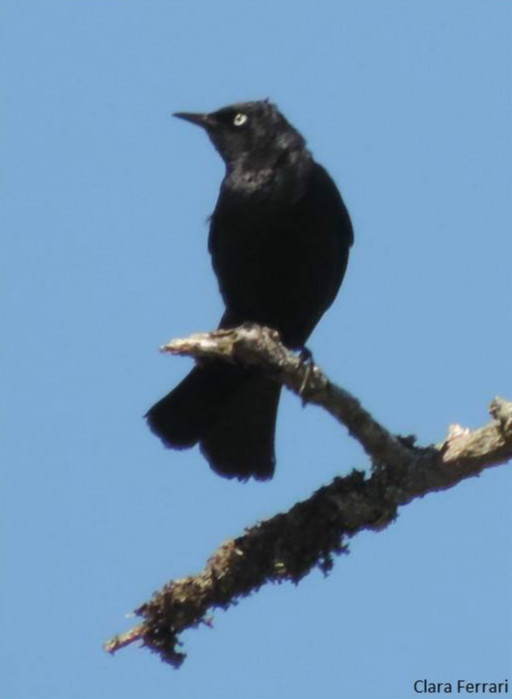The Rusty Blackbird is one of the most rapidly declining bird species in North America. Data from two long-term monitoring programs, the Christmas Bird Count and the Breeding Bird Survey, indicate that Rusty Blackbird numbers have declined 85-95% since 1970. Between 2002 and 2012 in Canada, Rusty Blackbirds declined as an annual rate of 1.09%. In Nova Scotia the decline across the same period was 6.55% annually.
The decline in this species has gone largely unnoticed until recent years. There are several reasons for this, including the difficulty of locating Rusty Blackbirds in their forested wetland breeding habitat, a lack of scientific study targeting the species, and a general disinterest by both the scientific community and the general public in what was once considered to be an uninteresting and commonplace bird.
Conservation status of the Rusty Blackbird nationally and in Atlantic Canada:
| COSEWIC | Special Concern |
| SARA | Special Concern (Schedule 1) |
| Nova Scotia | Endangered |
| New Brunswick | Special Concern |
| Newfoundland at Labrador | Vulnerable* |
*equivalent to COSEWIC’s Special Concern
Threats
The specific factors driving the decline in Rusty Blackbird populations have not yet been confirmed. There are many plausible threats, and more research is required to better understand these threats.
Breeding Habitat Loss and Contamination:
- Loss of wetlands due to commercial deforestation of the boreal forest.
- Loss of wetlands due to conversion of habitat to agricultural and other land uses (e.g. peat production, oil and gas activities, and flooding of reservoirs)
- Loss of wetlands due to drainage (e.g. oil sands development and hydroelectric projects)
- Loss of wetlands due to climate change, especially in the boral forest.
- Contamination from industrial pollutants. Levels of mercury are high in the eastern part of the breeding range (including the Maritimes) in wetland environments. The effects of mercury contamination are unknown in Rusty Blackbirds, though mercury is shown to kill embryos in other blackbird species and has been detected in the bodies of Rusty Blackbirds in Nova Scotia.
- Contamination due to the acidification of wetlands from industrial pollution, especially in the eastern breeding range. Changes in wetland ecology, invertebrate assemblages, and elevated levels of metals result from acidification.
Winter Habitat Loss and Degradation:
- Widespread loss of wetlands (up to 80%) due to the conversion of habitat to agricultural and other land uses in the southern United States.
- Increased competition with other bird species (e.g. Common Grackles and Red-winged Blackbirds) that rely on the same limited wintering habitat as resources become scarce.
Accidental Mortality:
- The poisoning of blackbird species as part of pest control programs on agricultural lands in the southern United States. Though Rusty Blackbirds account for very little damage to crops, they are often the unintended victims of such poisonings
More research is needed to determine how each of these factors is affecting the Rusty Blackbird populations, how to best mitigate their effects, and how best to support the recovery of these birds.
Sources: Management Plan for the Rusty Blackbird (ECCC), Species at Risk Public Registry: Rusty Blackbird (ECCC), Rusty Blackbird Working Group – Conservation Issues, Birds of North America Online: Rusty Blackbird

